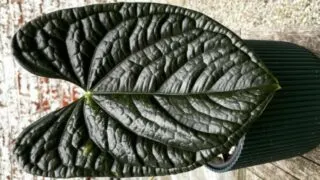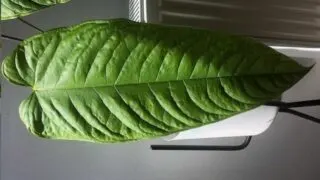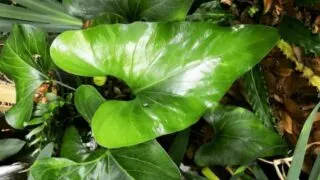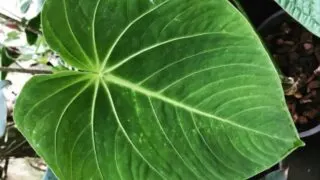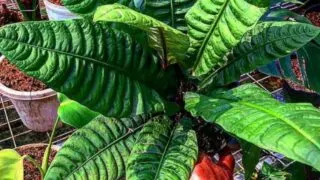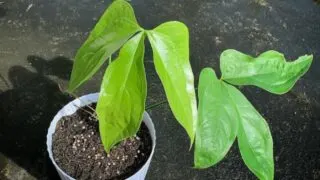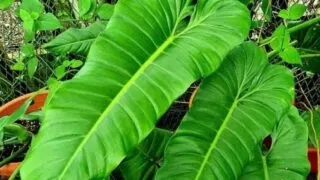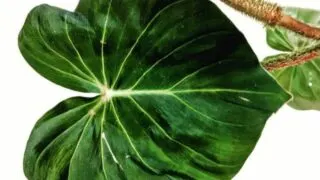Anthurium Luxurians was discovered growing along the streams of rainforests in Columbia. This plant has a sophisticated but aesthetical appearance with its puckered deep green leaves. For a long time, it was considered Anthurium Splendidum because of its close resemblance. The textured surface reflects light making the plant look more vibrant and green. Young leaves …
Plant Care
Formerly known as Anthurium Dussii and very commonly sold as Anthurium Guildingii, this plant is now officially called Anthurium Balaoanum. The most important reason as to why I have this plant in my garden is the leathery texture it has and how it feels. With a soft and velvet-like touch, this plant is truly a …
Anthurium Lineolatum is considered a rare plant. This plant is native to Ecuador and is known for its beautiful leaves that have a paper-like feel. Anthurium Lineolatum comes from a family of unique plants known for their large leaves and beautifully shaped blooms. They are grown best in hardiness zones ten and above. Anthurium …
Anthurium Watermaliense is known for its exquisite foliage that gives every home and office a tropical feel. Commonly known as Black Anthurium, this variety’s an evergreen perennial. The name Black Anthurium comes from its stunning dark-colored blooms that have a heart shape. Anthurium Watermaliense is grown best in hardiness zones 10-11. It is now mostly …
Anthurium Waterburyanum is endemic to Ecuador. This Anthurium has long velvety leaves and is mostly grown because of this feature. This plant grows best in hardiness zones ten or higher. Anthurium Waterburyanum is not the official name for this plant. It was named Anthurium “Waterburyanum” after the original collector of this plant named Bette Waterburyanum. …
One of the rarest Anthuriums is the Anthurium Reflexinervium, a gorgeous plant naturally found only in Tingo Maria, Peru. The species is noticeably hard to find due to its unparalleled charm and some unusual growing needs. Fortunately, some cultivated varieties allow houseplants enthusiasts to grow them in their gardens and homes. This wonderful Anthurium is …
Anthurium Pedatum is a stunning foliage plant that one can find in tropical rainforests. It is considered endogenous to Colombia, Western Andes. This plant is known for the gorgeous web-like foliage it develops. It is also known as Anthurium Fortunatum G.S.Bunting and Pothos Pedatus Kunth, as well as belongs to the family of Araceae Juss …
Simply because of its bright green leaves and vehemently soft touch, Philodendron Deflexum is a must-have for my space. It requires little maintenance to grow and is usually repellent to pests. Apart from its gentle touch and vibrant appearance, this plant is also great for the environment as it eliminates trichloroethylene, xylene, benzene, and ammonia …
Philodendron Dodsonii is a native to Ecuador, Colombia, Costa Rica, and Panama. It’s a part of the vast Philodendron genus This Philodendron has lush foliage with stunning dark green color and is grown in hardiness zones 9 to 11. Philodendron Dodsonii Care Philodendron Dodsonii needs to be provided with well-draining soil that has a …
Philodendrons fibrosum is a widely known plant that is kept in homes and gardens all over the world. They started blooming excessively in the northern side of Europe in the 19th century, where they managed to earn a lot of popularity due to their stunning large leaves and efficient growth. This versatile plant can be …

